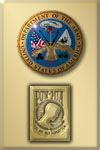
Sheldon D. Schultz

born April 19, 1948
lost January 5, 1968
| Rank/Branch: | WO/US Army |
| Unit: | 176th Aviation Company, 14th Aviation Battalion, 23rd Infantry Division
|
| Home City of Record: | Altoona PA |
| Country of Loss: | Laos |
| Loss Coordinates: | 161907N 1063445E (XD701021) |
| Status (in 1973): | Missing in Action |
| Category : | 4 |
| Acft/Vehicle/Ground: | UH1D |
| Refno: | |

Incident Synopsis
On January 5, 1968 WO Dennis C. Hamilton, aircraft commander; WO Sheldon D. Schultz, pilot; SP5 Ernest F. Briggs, Jr., crew chief; SP4 James P. Williamson, crewman, and SSgt. John T. Gallagher, passenger; were aboard a UH1D helicopter (tail # 66-1172) on a mission to infiltrate an indigenous recaonnaissance patrol into Laos
The reconnassaince patrol and SSgt. Gallagher were operating under orders to Command & Control North, MACV-SOG (Military Assistance Comamnd, Vietnam Studies and Observation Group). MACV-SOG was a joint service high command unconventional warfare task force engaged in highly classified operations throughout Southeast Asia. The 5th Special Forces channeled personnel into MACV-SOG (although it was not a Special Forces group) through Special Operations Augmentation (SOA), which provided their "cover" while under secret order to MACV-SOG. The teams performed deep penetration missions of strategic reconnassaince and interdiction which were called, depending on the time frame, "Shining Brass" or "Prairie Fire" missions.
As the aircraft approached the landing zone about 20 miles inside Laos south of Lao Bao, it came under heavy 37mm anti-aircraft fire while at an altitude of about 300 feet above ground level. The aircraft immediately entered a nose-low vertical dive and crashed.
Upon impact with the ground, the aircraft burst into flames which were 10 to 20 feet high. No radio transmissions were heard during the helicopter's descent, nor were radio or beeper signals heard afte rimpact. Four attempts to get into the area of the downed helicopter failed due to intense ground fire.
During the next two days more attempts to get to the wreckage failed. The pilot of one search helicopter maneuvered to within 75 feet of the crash site before being forced out by enemy fire. The pilot who saw the wreckage stated that the crashed helicopter was a mass of burned metal and that there was no part of the aircraft that would be recognized. No signs of life were sen in the crash area.
Weather delayed further search attempts for a couple of days. After the weather improved, the successful insertion of a ground team was made east of the crash site to avoid enemy fire. The team was extracted after the second day, finding nothing. The crash site wa located near the city of Muong Nong in Savannakhet Province, Laos.
Nearly 600 Americans were lost in Laos. The Pathet Laos insisted that the "tens of tens" of Americans they held would only be released from Laos, but the U.S. did not officially recognize the communist faction in Laos and did not negotiate for American prisoners being held by them. Not one American held by the Lao was ever released.
Alarmingly, evidence continues to mount that Americans were left as prisoners in Southeast Asia and continue to be held today. Unlike "MIAs" from other wars, most of the nearly 2500 men and women who remain missing in Southeast Asia can be accounted for. Perhaps the crew of the helicopter did not survive the crash, but until there is positive proof of their deaths, we cannot forget them. If even one was left behind at the end of the war, alive, (and many authorities estimate the numbers to be in the hundreds), we have failed as a nation until and unless we do everything possible to secure his freedom and bring him home.
copy of photograph provided by Sheldon's uncle, Mr. Clyde Laird. Thank you very very much Mr. Laird.
All biographical and loss information on Vietnam Era POW/MIAs provided by Operation Just Cause supplied by Chuck and Mary Schantag of POW/NET. Please check with POW/NET regularly for updates.

© 1999-2005 All Rights Reserved



